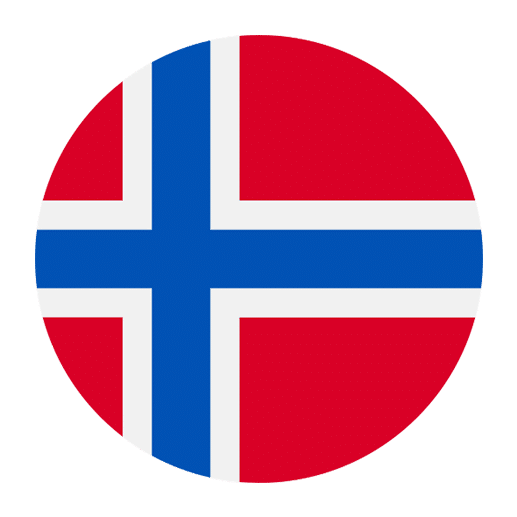Learning a new language can be both exciting and challenging, but combining it with a fun activity like cooking can make the experience even more rewarding. If you’re delving into Norwegian and have a passion for cooking, this article is tailor-made for you. We will explore some essential Norwegian words and phrases related to cooking and recipes, giving you the tools to understand and follow Norwegian recipes with ease. Let’s dive into the culinary world of Norway!
Basic Cooking Verbs
To start with, it’s crucial to get familiar with some basic cooking verbs. Here are a few essential ones:
– **Å koke**: to boil
– **Å steke**: to fry or roast
– **Å bake**: to bake
– **Å skjære**: to cut
– **Å hakke**: to chop
– **Å røre**: to stir
– **Å blande**: to mix
– **Å helle**: to pour
– **Å skrelle**: to peel
– **Å veie**: to weigh
Knowing these verbs will help you understand what actions need to be performed when following a recipe.
Common Ingredients
Understanding the ingredients is a must when cooking. Here are some common ingredients in Norwegian, along with their English translations:
– **Mel**: flour
– **Sukker**: sugar
– **Salt**: salt
– **Smør**: butter
– **Egg**: egg
– **Melk**: milk
– **Vann**: water
– **Olje**: oil
– **Kjøtt**: meat
– **Fisk**: fish
– **Kylling**: chicken
– **Grønnsaker**: vegetables
– **Frukt**: fruit
– **Ost**: cheese
– **Krydder**: spices
Kitchen Utensils
Equipping yourself with the right vocabulary for kitchen utensils will make it easier to follow recipes. Here are some key terms:
– **Kniv**: knife
– **Gaffel**: fork
– **Skje**: spoon
– **Visp**: whisk
– **Bolle**: bowl
– **Kjele**: pot
– **Stekepanne**: frying pan
– **Ovn**: oven
– **Målebeger**: measuring cup
– **Skjærefjøl**: cutting board
– **Rivjern**: grater
– **Sikt**: sieve
Measurements and Quantities
Understanding measurements and quantities is essential for successful cooking. Here are some key terms:
– **Kopp**: cup
– **Desiliter**: deciliter (dl)
– **Gram**: gram
– **Kilogram**: kilogram
– **Teskje**: teaspoon
– **Spiseskje**: tablespoon
– **Liten**: small
– **Stor**: large
– **En**: one
– **To**: two
– **Tre**: three
– **Fire**: four
Common Recipe Instructions
Here are some common phrases you might encounter in Norwegian recipes:
– **Forvarm ovnen til 180 grader**: Preheat the oven to 180 degrees.
– **Kutt grønnsakene i små biter**: Cut the vegetables into small pieces.
– **Rør inn sukkeret**: Stir in the sugar.
– **Stek i 20 minutter**: Bake for 20 minutes.
– **Tilsett melken gradvis**: Gradually add the milk.
– **La det koke i 10 minutter**: Let it boil for 10 minutes.
– **Hell røren i formen**: Pour the batter into the mold.
– **Pisk eggene**: Whisk the eggs.
– **Smelt smøret**: Melt the butter.
– **Server varm**: Serve warm.
Cooking Techniques
Understanding different cooking techniques will help you better interpret recipes. Here are some techniques in Norwegian:
– **Å dampe**: to steam
– **Å grille**: to grill
– **Å marinere**: to marinate
– **Å koke opp**: to bring to a boil
– **Å småkoke**: to simmer
– **Å sautere**: to sauté
– **Å smuldre**: to crumble
– **Å avkjøle**: to cool
– **Å piske**: to whip
Descriptive Words
Descriptive words are often used in recipes to explain the desired texture or flavor of a dish. Here are some useful adjectives:
– **Myk**: soft
– **Sprø**: crispy
– **Saftig**: juicy
– **Kremet**: creamy
– **Søt**: sweet
– **Sur**: sour
– **Sterk**: spicy
– **Mild**: mild
– **Bitter**: bitter
– **Salt**: salty
Cooking-Related Questions and Phrases
To enhance your conversational skills in Norwegian, here are some useful questions and phrases related to cooking:
– **Hva er din favorittoppskrift?**: What is your favorite recipe?
– **Hvordan lager du dette?**: How do you make this?
– **Kan du gi meg oppskriften?**: Can you give me the recipe?
– **Hvor lenge skal det koke?**: How long should it boil?
– **Er det for sterkt?**: Is it too spicy?
– **Trenger vi mer salt?**: Do we need more salt?
– **Hvor mye sukker skal vi bruke?**: How much sugar should we use?
– **Hvilke krydder bruker du?**: Which spices do you use?
– **Er det ferdig?**: Is it done?
– **Skal vi smake på det?**: Should we taste it?
Traditional Norwegian Dishes
To practice your new vocabulary, why not try making some traditional Norwegian dishes? Here are a few:
– **Kjøttkaker**: Norwegian meatballs often served with potatoes, gravy, and lingonberry jam.
– **Lutefisk**: Dried fish (usually cod) that has been soaked in a lye solution before cooking.
– **Raspeballer**: Potato dumplings, often served with meat and vegetables.
– **Fårikål**: A hearty stew of lamb and cabbage, often considered Norway’s national dish.
– **Smørbrød**: Open-faced sandwiches that can be topped with a variety of ingredients such as fish, meat, cheese, and vegetables.
– **Rømmegrøt**: A sour cream porridge usually served with sugar, cinnamon, and butter.
– **Koldtbord**: A cold buffet with a variety of dishes, including fish, meats, salads, and bread.
Recipe for Kjøttkaker (Norwegian Meatballs)
Let’s put your new vocabulary to the test with a simple recipe for Kjøttkaker, a beloved Norwegian dish.
Ingredients:
– 500 grams of ground beef (kjøttdeig)
– 1 small onion, finely chopped (liten løk, finhakket)
– 1 egg (egg)
– 1/2 cup of milk (melk)
– 1/2 cup of breadcrumbs (brødsmuler)
– 1 teaspoon of salt (salt)
– 1/2 teaspoon of pepper (pepper)
– 1/4 teaspoon of ground nutmeg (malt muskat)
– 2 tablespoons of butter (smør) for frying
Instructions:
1. In a large bowl (stor bolle), combine the ground beef, chopped onion, egg, milk, breadcrumbs, salt, pepper, and nutmeg. Mix (blande) until well combined.
2. Shape the mixture into small meatballs (kjøttkaker).
3. In a frying pan (stekepanne), melt the butter (smelt smøret) over medium heat.
4. Add the meatballs to the pan and fry (steke) them until they are browned on all sides and cooked through, about 10-15 minutes.
5. Serve warm (server varm) with potatoes, gravy, and lingonberry jam if desired.
Conclusion
With these Norwegian words and phrases for cooking and recipes, you’re now equipped to explore Norwegian cuisine and improve your language skills simultaneously. Cooking is a fantastic way to immerse yourself in a new culture, and understanding the culinary vocabulary will make the experience even more enjoyable. So why not try a Norwegian recipe today and see how much you’ve learned? Bon appétit, or as they say in Norway, vel bekomme!

